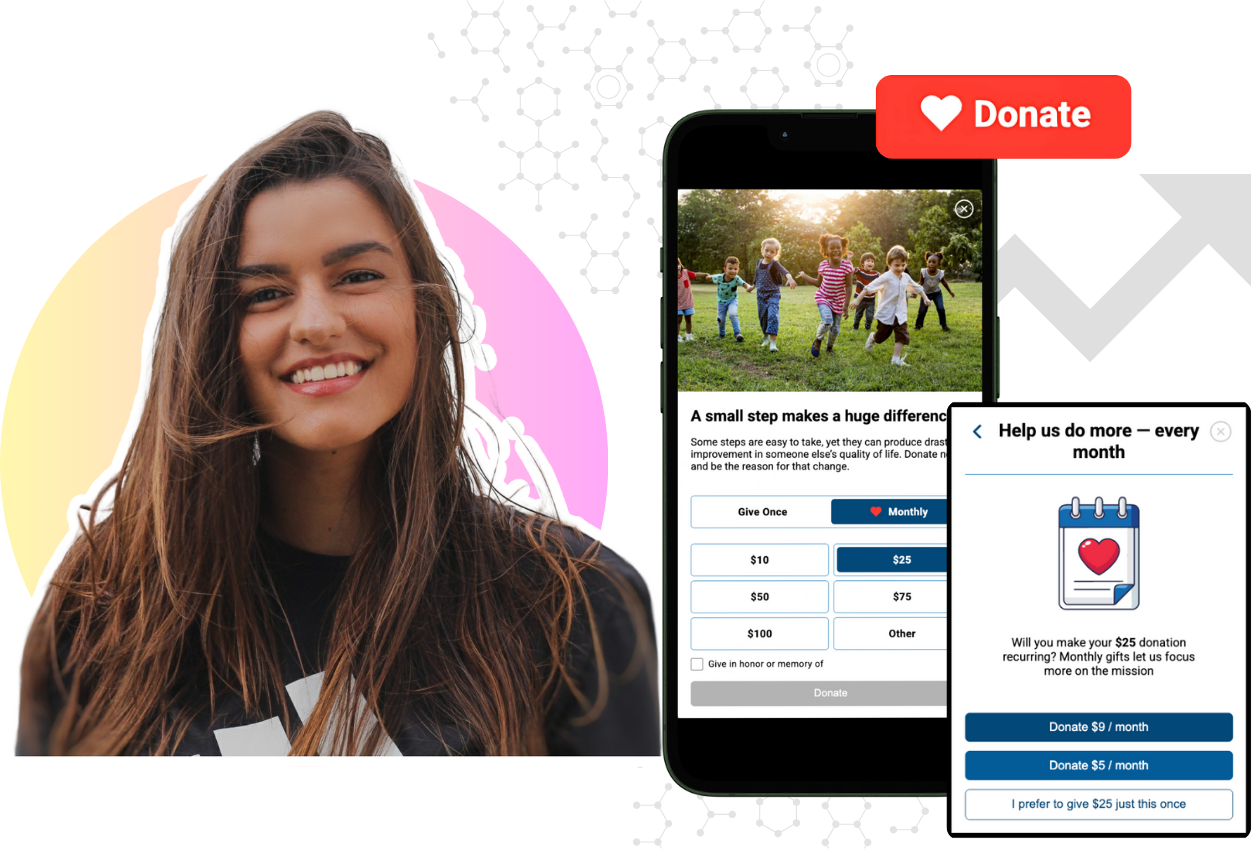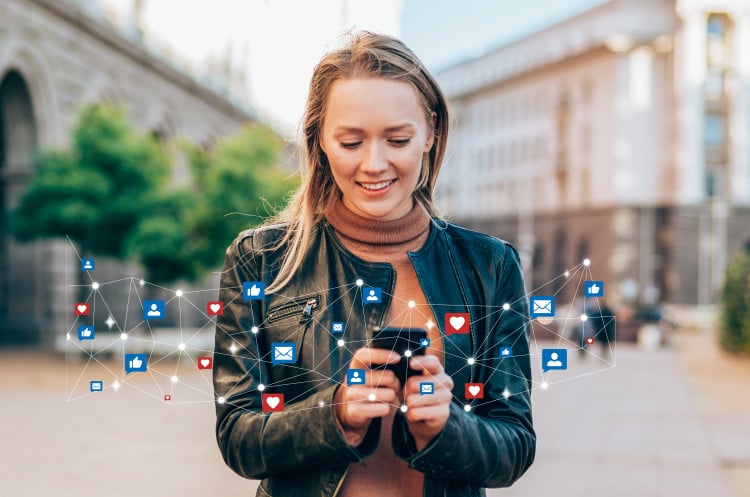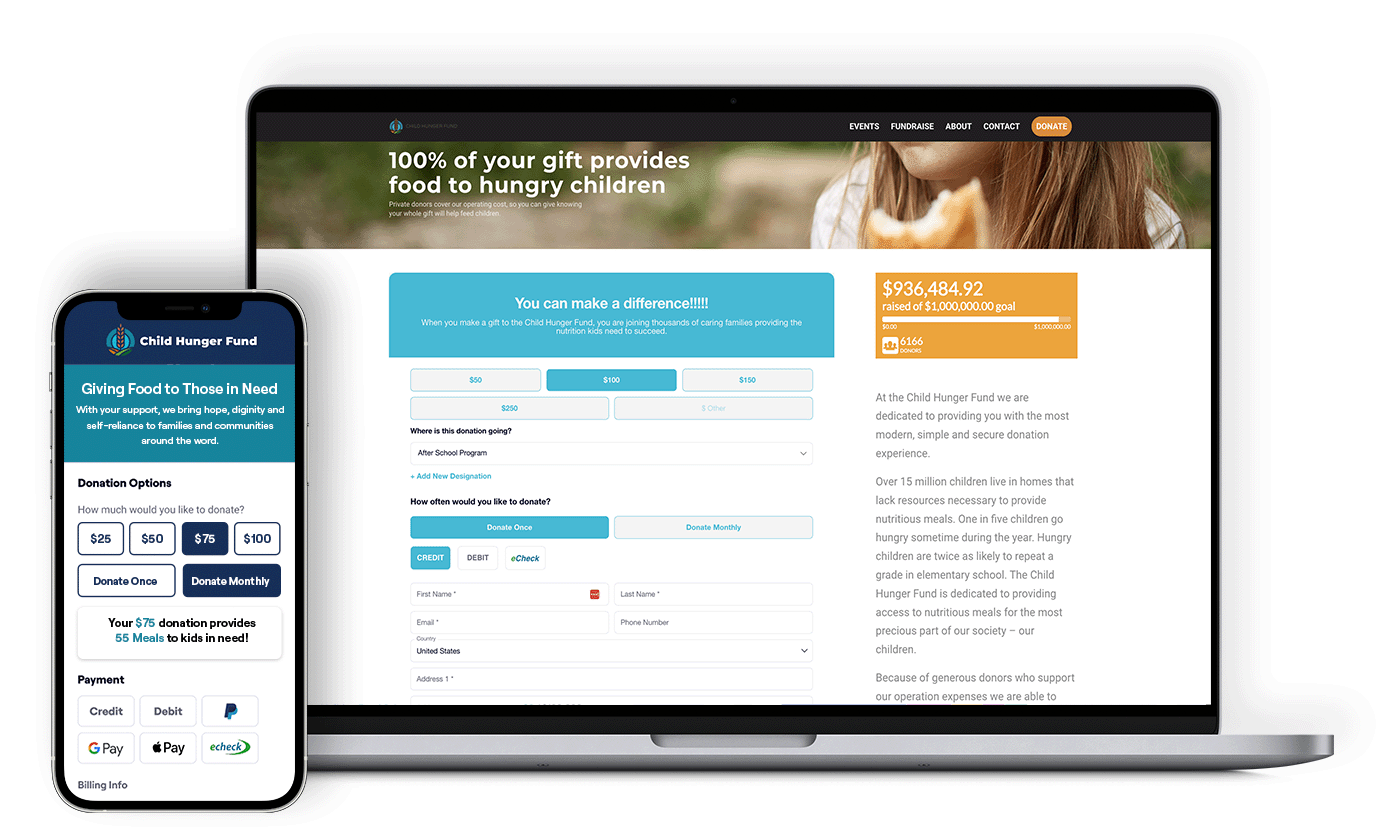Enhancing Generosity: Key Elements to Incorporate in a Giving Form
Giving forms play a crucial role in facilitating donations and philanthropic endeavors. They serve as the bridge between individuals who wish to...

Mobile-First Pop-Up Donation Form
Launch mobile-first pop-up forms in minutes, use built-in tools to capture more donations, and optimize the giving experience—no dev team required.
New to online donation pages for your nonprofit? Start here.
Donation page A/B testing - no science degree needed.
Keep your donation page loading fast - and drive higher conversions.

The 4 Types of Online Donation Experiences
89% of donors leave without giving. Learn how to use the right donation form to close the gap and boost conversions.
5 min read
![]() iDonate
:
October 21
iDonate
:
October 21

The challenges today’s nonprofit leaders face are well documented — from the persistent hurdles to acquiring new donors to issues of retention. Redundant fundraising tools, lack of connectivity among the technologies and systems they do employ, and an operational approach that is focused almost exclusively on hitting fundraising targets instead of cultivating long-term donor relationships — all contribute to an outmoded business model that doesn’t bode well for nonprofits in the future.
When I think about the transformation awaiting nonprofits, I recall an observation novelist William Gibson once made: “The future is already here. It's just not evenly distributed yet.” Nonprofits are poised now more than ever to act on the window of opportunity to embrace a new way of seeing and interacting with donors that will help them establish a donor base that is truly engaged and committed to the sustainability of the cause they’ve embraced.
Increasingly, new developments are significantly altering the nature and behavior of the giving universe. The nonprofits that endure are the ones that recognize these shifts beginning to happen and start putting these new developments to use now.
To that end, here are seven ways we can expect to see the next generation of giving change.
Related story: Next Generation of Generational Giving: Who Gives the Most and Why
One of the most important things nonprofits must recognize is that today’s donors are also today’s consumers. They move seamlessly between multiple digital channels to digest news, socialize and take part in all of the varied communities in which they participate.
The pandemic pretty much erased any remaining inertia of analog giving, boosting reliance on social media channels for virtually everything. Ordering and delivery of food and consumer goods, telemedicine and hosting business meetings over Zoom — all of these things were already in play before COVID-19. But they really took off as the pandemic took hold. Similarly, the nature of today’s digitally driven society has profound implications for how the nonprofit world must interact with donors.
At the end of the day, donors bring the same expectations of streamlined, accessible and responsive experiences to their giving experience. It’s imperative for nonprofits to invest in their donor experience by leveraging technology to make it easy for donors to find, interact, follow and give to their cause. Nonprofit organizations who fail to make this investment aren’t just lagging behind, they run the risk of being obsolete as the population expectations move forward.
COVID-19 hastened the emergence of brand new donors in fundraising. During the pandemic, the struggles and inequities of people at the lower end of the socio-economic scale became abundantly evident seemingly overnight with existing gaps in access, resources, support and options becoming obvious. The shared experience of a global pandemic resulted in an increase in charitable giving among individuals who had never previously donated.
The new donors that are coming to the table (ages 18 to 35) are younger than average, have a higher reported net worth and are more diverse than previous donors. Translation: What has worked before to attract and keep new donors isn’t going to work moving forward because the audience is shifting.
As Millennials and Gen Zers begin to take center stage in philanthropy, I see a trend toward everyday giving. Everyday giving refers to donating smaller, more regular donations to causes versus the one-time-a-year, larger donation. These next-gen philanthropists are focused on creating change in the causes they care most about that have a real-time impact.
For example, Millennials (79%) are the most likely generation to research hurricane charities, over and beyond Gen X (59%) or Boomers (56%). Historically, nonprofits have put emphasis on large gift donors that tend to provide a year's worth of giving in one or two events annually.
However, looking forward, nonprofits must emphasize the donor experience of the day-to-day philanthropist who may be giving smaller gifts, but giving more frequently. By emphasizing the donor experience, nonprofits can build trust and engender advocacy from a very passionate, very engaged new generation of donors.
Statistically speaking, three out of four donors never return to give a second gift. Despite this, we also know it’s actually more effective to focus on donor retention over acquisition. Closing the loop — communicating on an ongoing, consistent basis with your donor base — ultimately relies upon maintaining an appropriate response in the course of each and every donor interaction.
By providing an iron-clad ledger of record, blockchain technology will gradually relieve nonprofits the burden of instituting a record-keeping system that supports closing the loop. This will greatly help ensure that donors feel gratified, appreciated and part of a cause, and will contribute greatly to increasing the lifetime value of a donor base.
The days of outbound nonprofit campaigns that rely on multi-layered, legacy infrastructures are numbered. As digital fluency takes greater hold of society, traditional outbound campaigns will evolve in step with a lighter, nimbler array of micro-campaigns — response mechanisms that reflect the always-on, social media-based fabric of our daily lives.
Nonprofits can leverage tools, such as push notifications and real-time alerts, to keep donors engaged on the good that’s happening in their organization. By creating a real-time feedback loop with donors, Nonprofits can create micro-interactions that fuel long-term engagement, trust and advocacy.
Nonprofits have long been challenged in demonstrating that funds raised are being allocated fully to the causes donors support. The rapid, sprawling flow of information hastened by social media has created an environment where transparency can take hold more than ever.
None of this is lost on nonprofit boards, who may soon reframe their apps and renew the context of their causes to all but eliminate any opacity in terms of where exactly a donor’s money is going. Framing things up in a way that makes people feel connected elevates the transactional aspect of writing a check to a higher level. Donors want to experience a direct connection to where their money is being allocated and the performance of their investments to feel fully invested in the cause.
Donor-advised funds are the fastest-growing charitable giving vehicle in the U.S. — and they will continue to grow in popularity. That’s because they’re one of the easiest and most tax-advantageous ways to give to charitable organizations. Donors can easily contribute a wide range of assets, maximize potential tax benefits, invest their donations for tax-free growth, and enjoy simplified record keeping and organization.
More recently, micro-donor-advised funds have been gaining traction. Compared to traditional donor-advised funds, which are more suited for donors who can deposit a large sum of money at the end of the year, micro-donor-advised funds encourage people to make regular small deposits. Structuring it this way opens up a lot of interesting opportunities. For example, companies that couldn’t participate in a traditional donor-advised fund can now deposit to micro-donor-advised funds in lieu of bonuses, as a corporate perk, birthday gifts, etc. Micro-donor-advised funds are democratizing the donor-advised fund concept by creating “giving wallets,” making this a more accessible giving vehicle to more people.
Donor-advised funds are also a very effective way for donors to support their legacy planning. This benefit comes into play considering the enormous wealth transfer underway in the U.S. and the desires of older baby boomers to establish a giving legacy, ensuring that the causes they care about will continue to be supported.
The ceaseless progress forged by constant technological innovations is reshaping the future of giving as we know it. Nonprofits that are built to last will be focused on these seminal developments and actively seek ways to bring them to bear in fulfilling their missions in a sustainable way.
Thanks for reading! Below are some additional learning resources for you:

Giving forms play a crucial role in facilitating donations and philanthropic endeavors. They serve as the bridge between individuals who wish to...
 Read More
Read More

Today’s donors expect more. When they choose to give online, they expect simplicity, transparency, and security. When your giving platform checks...